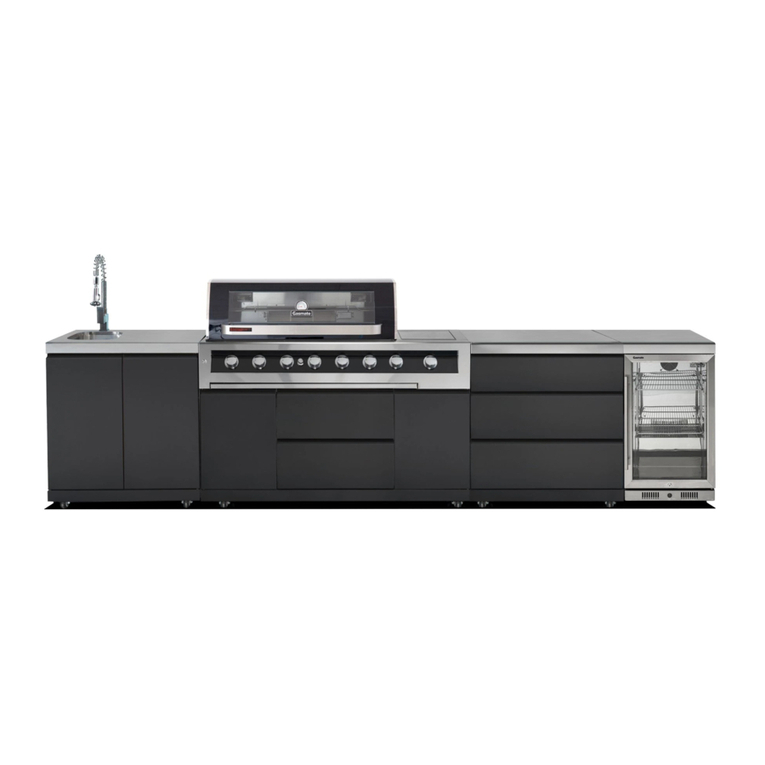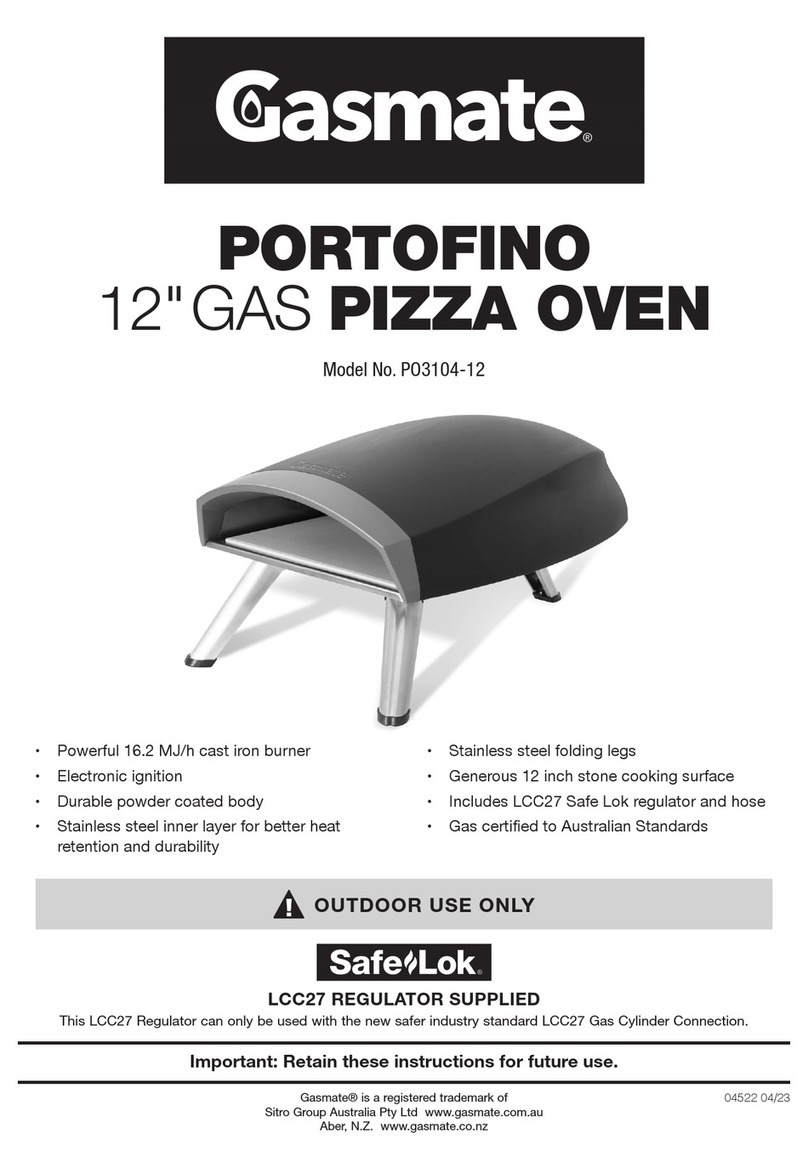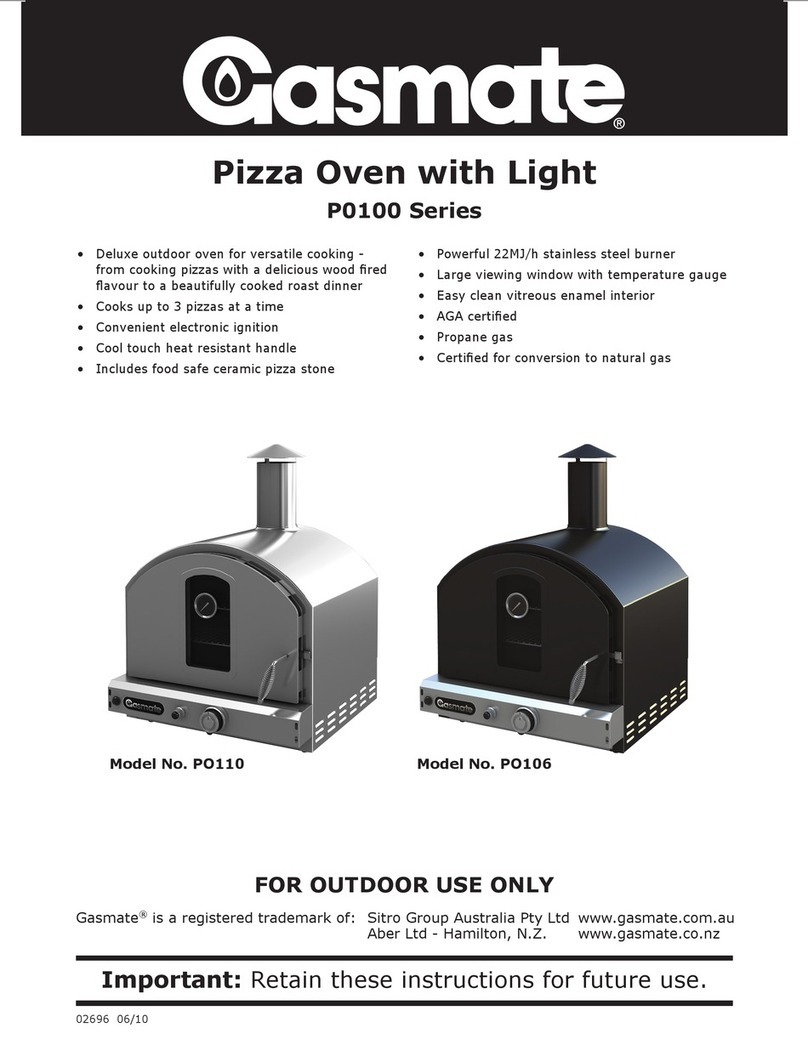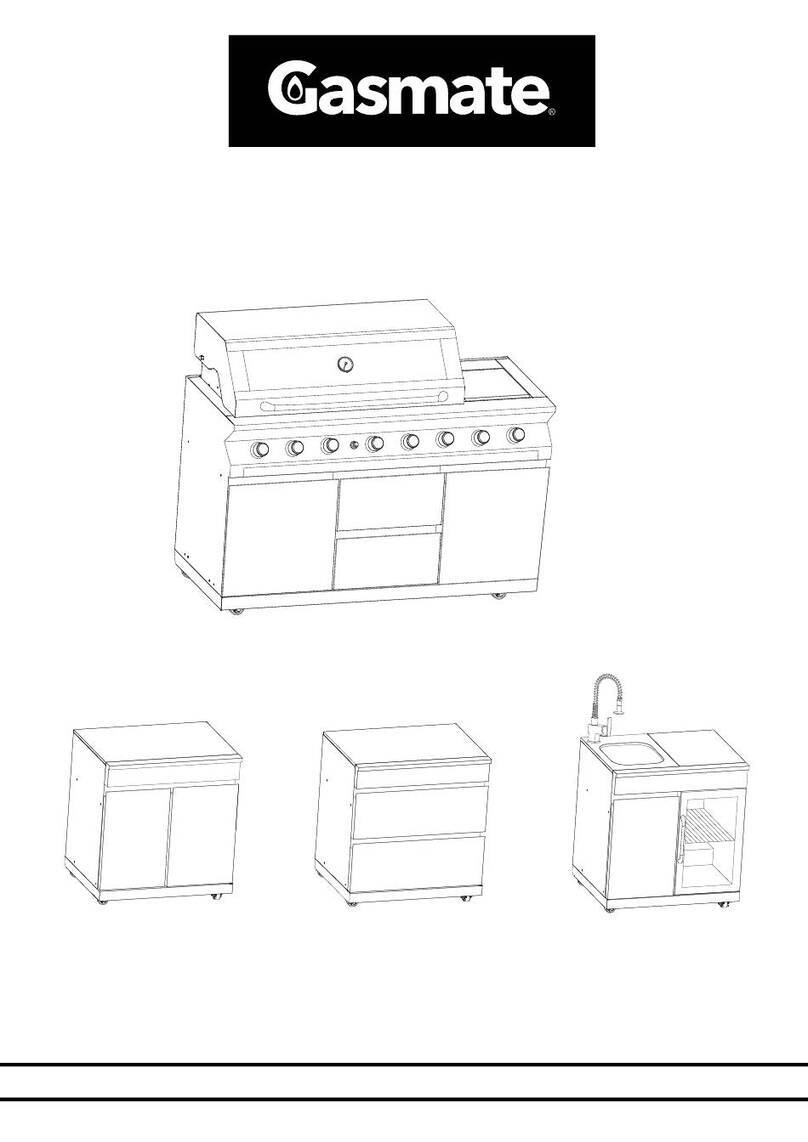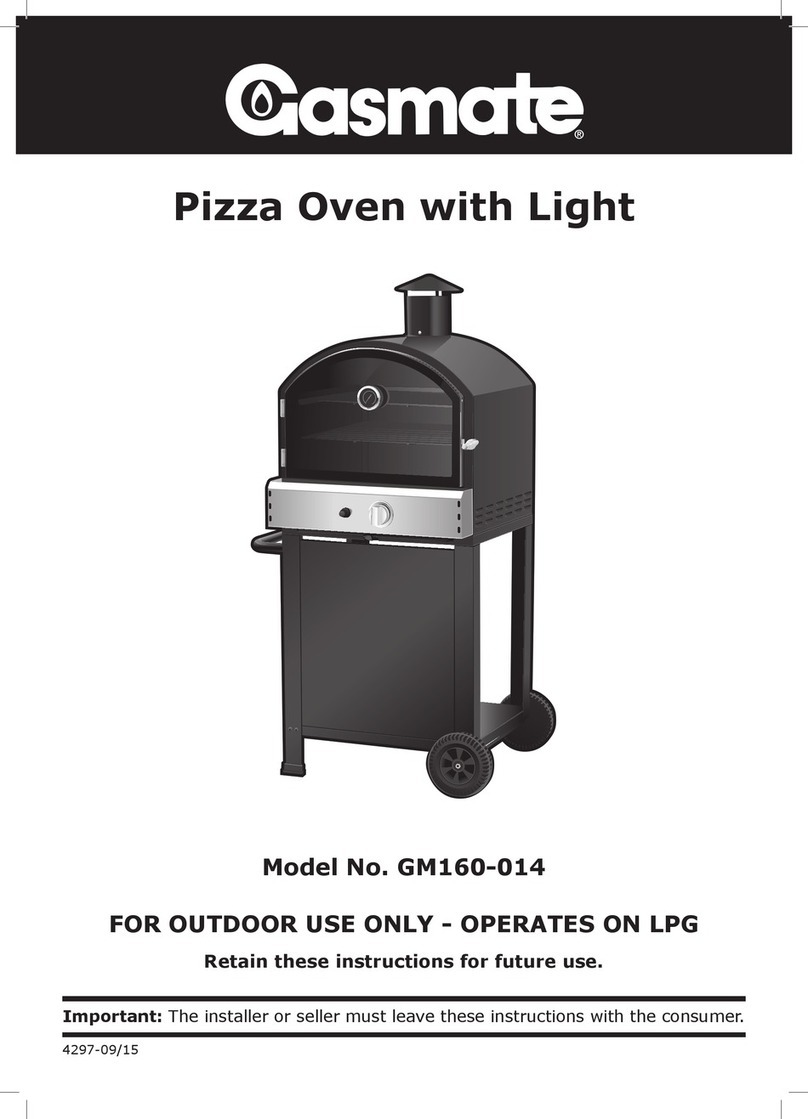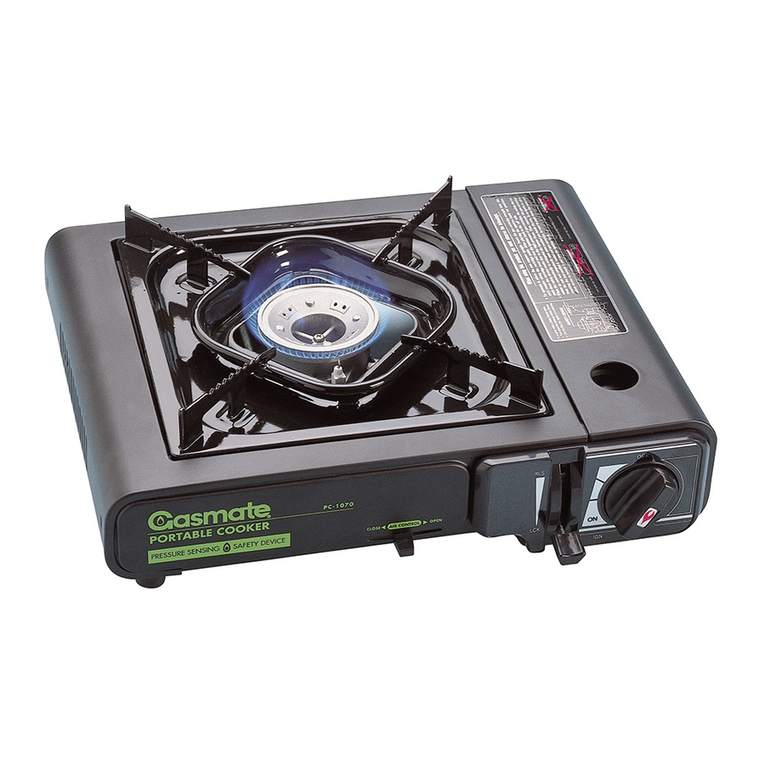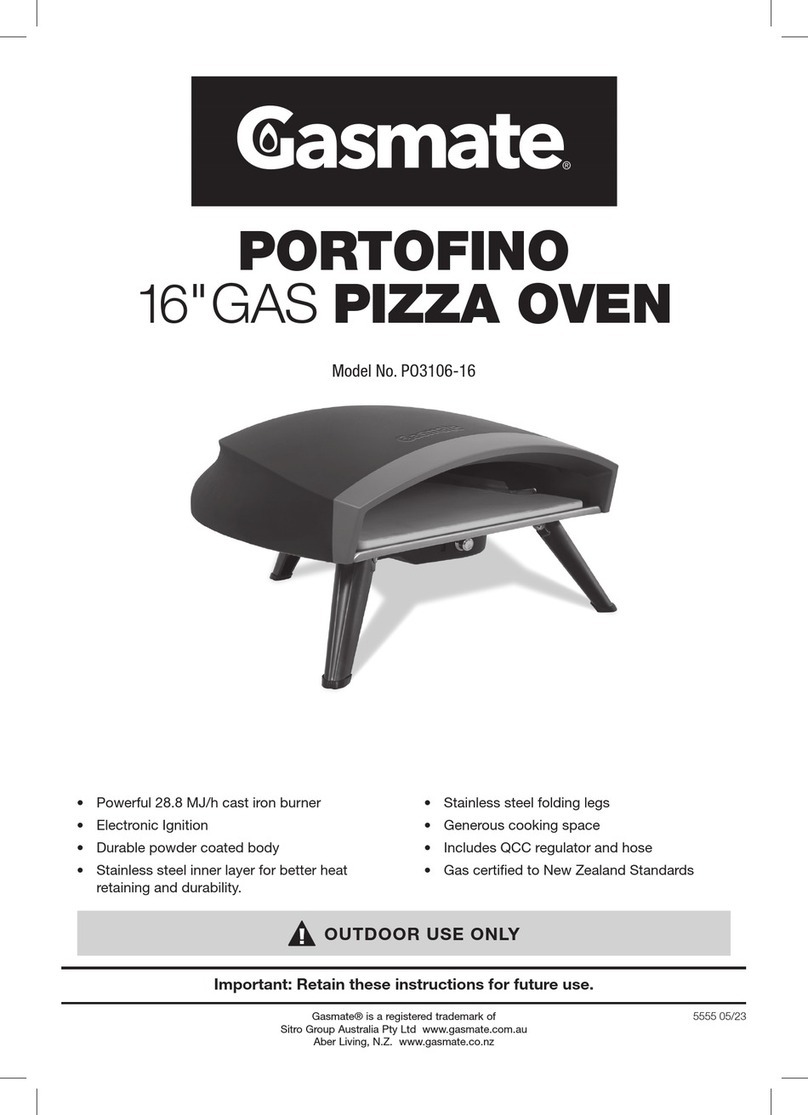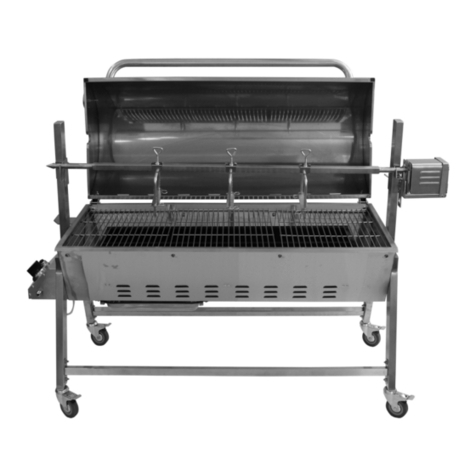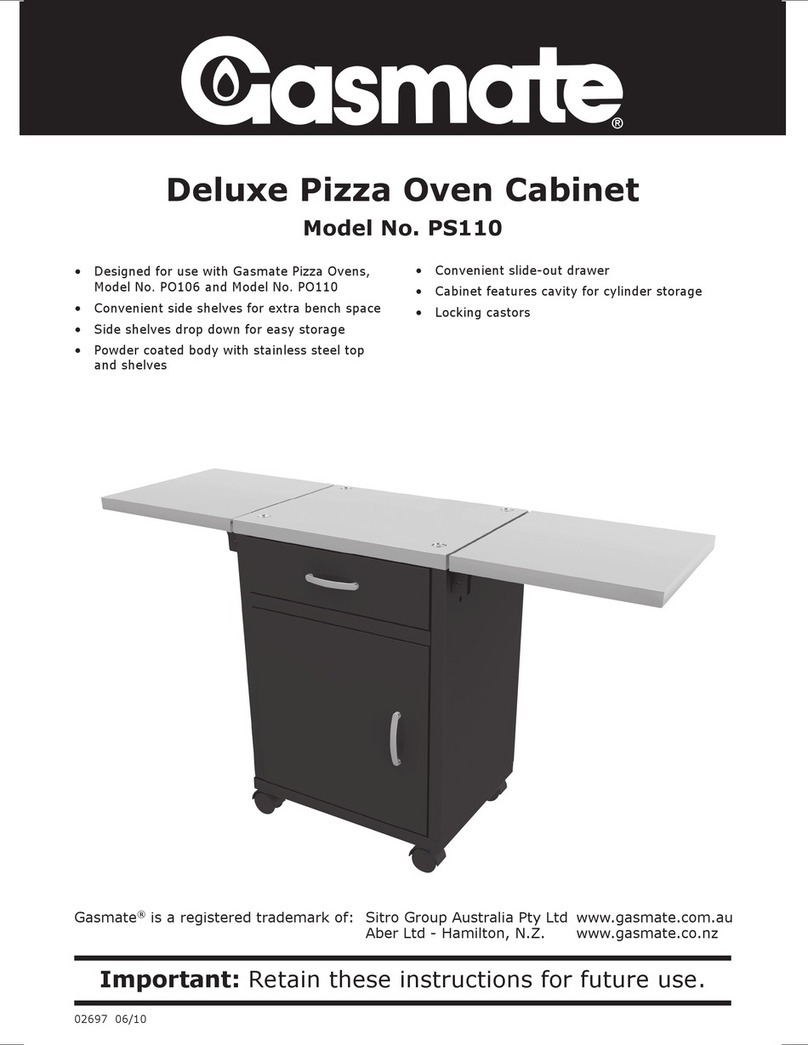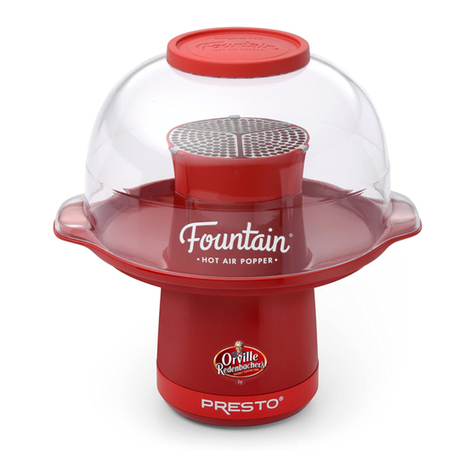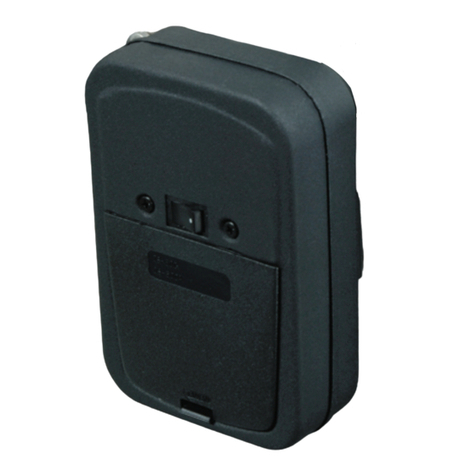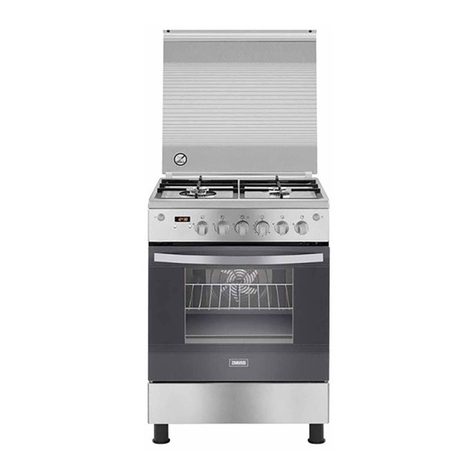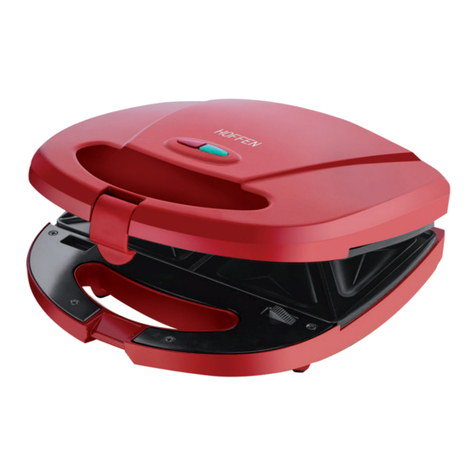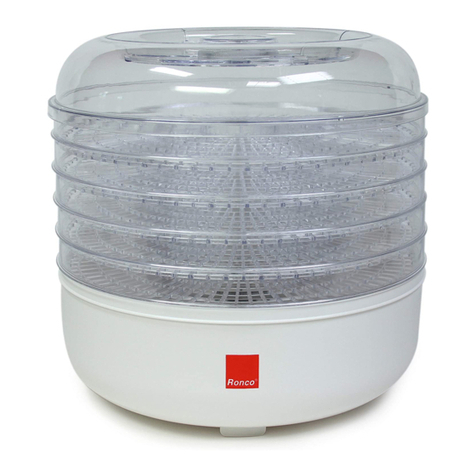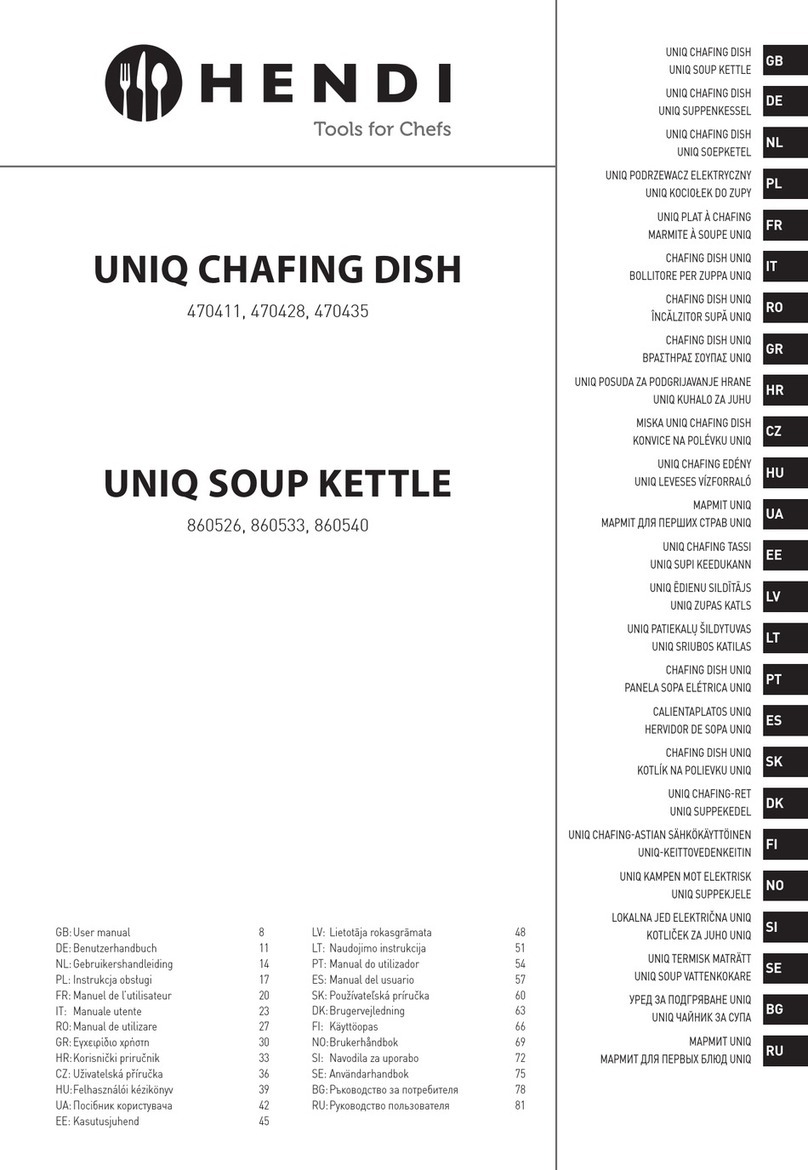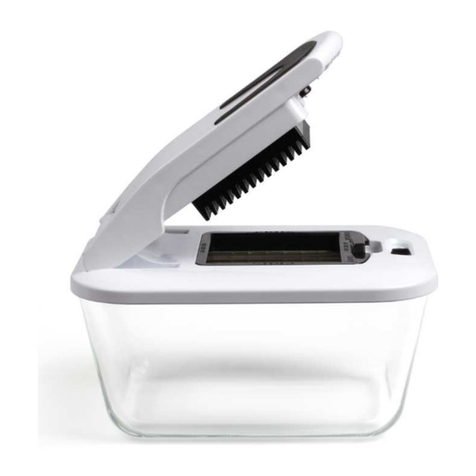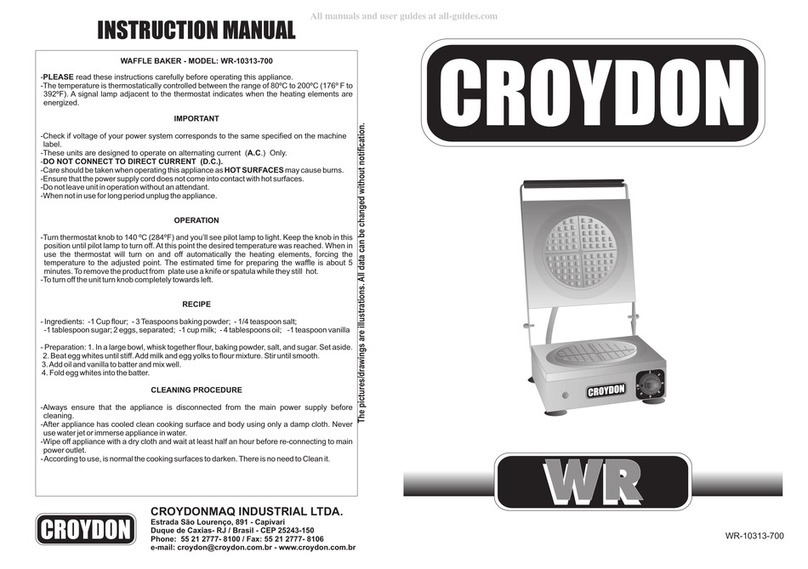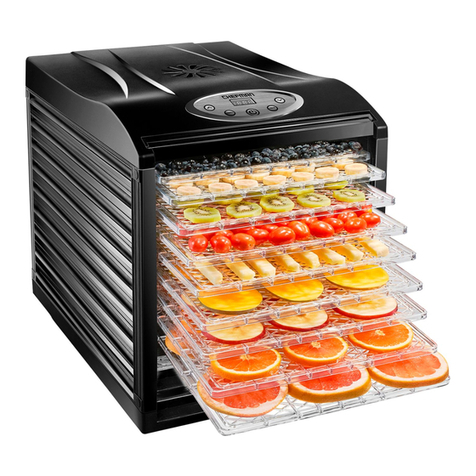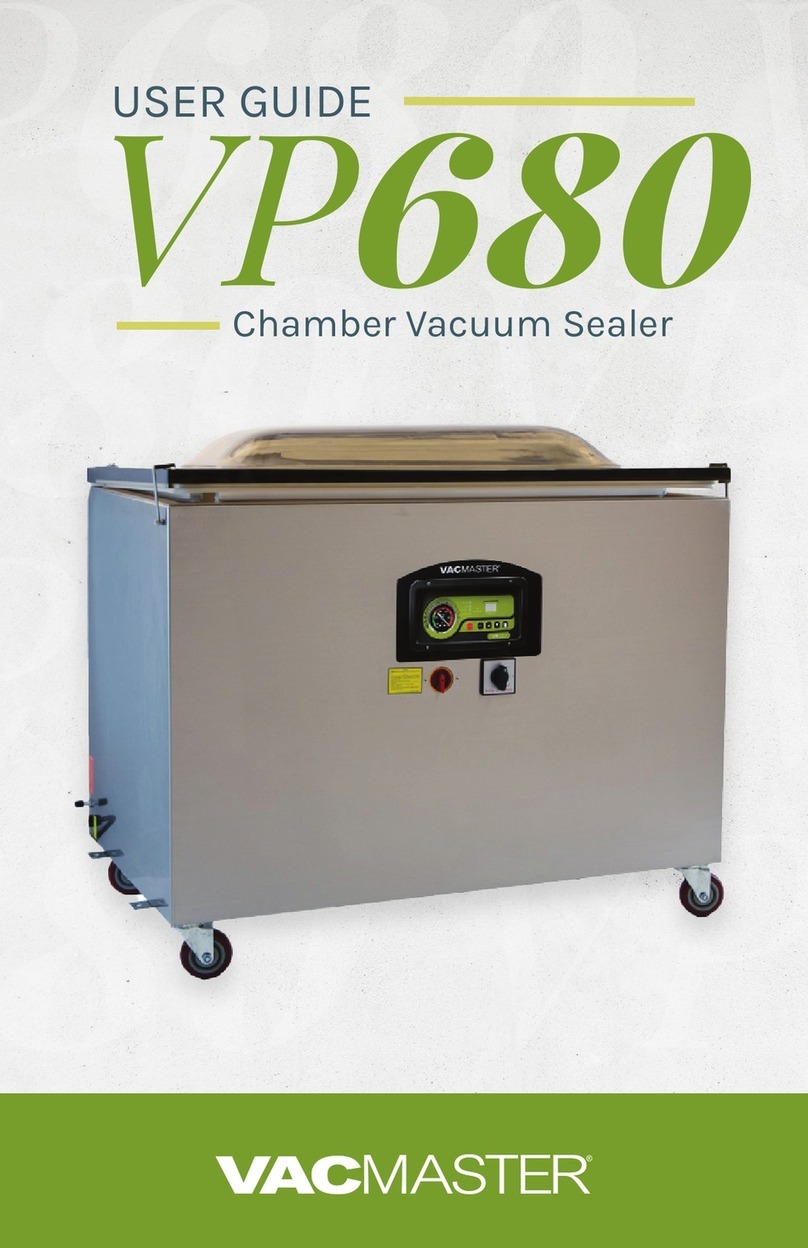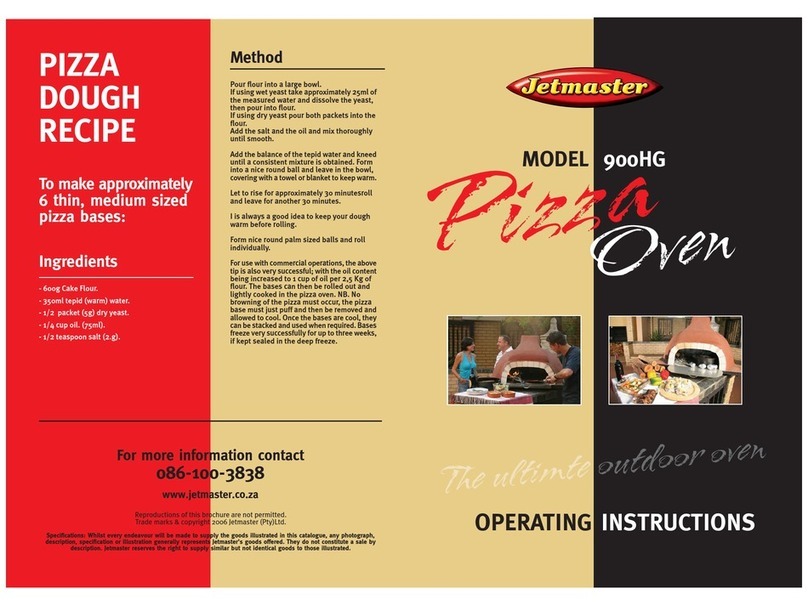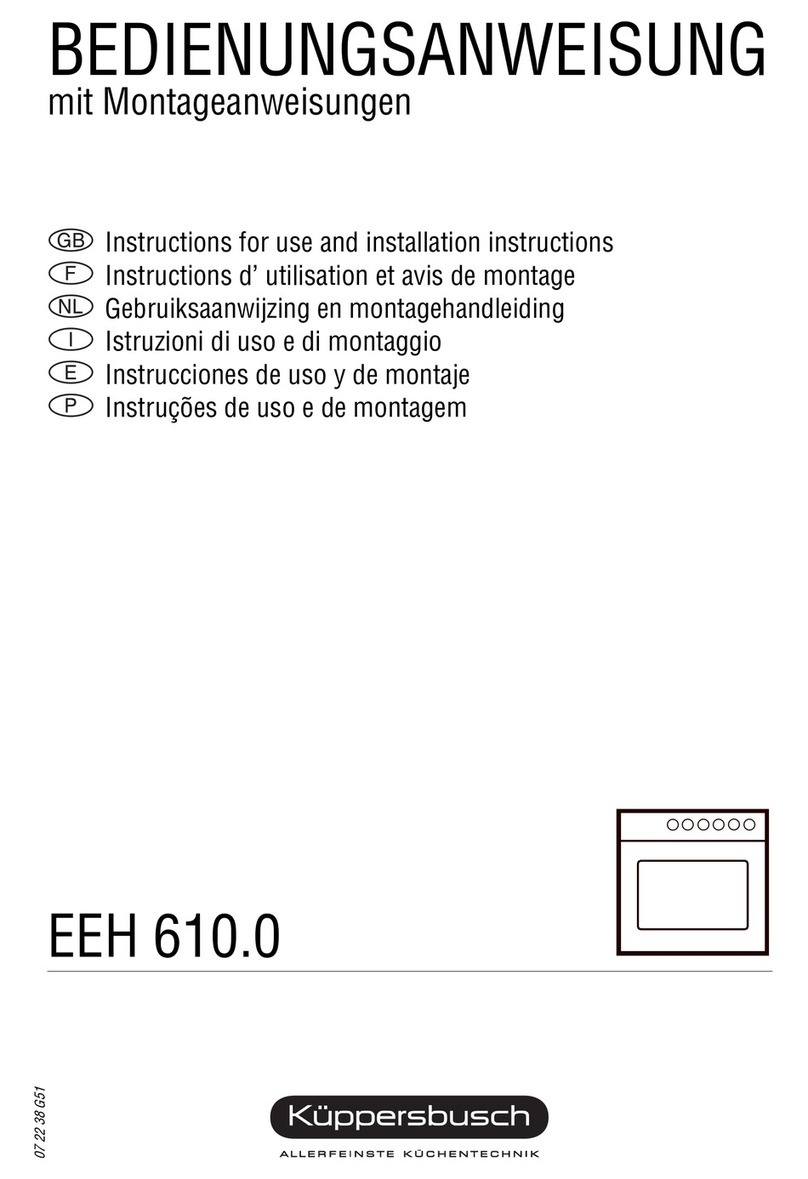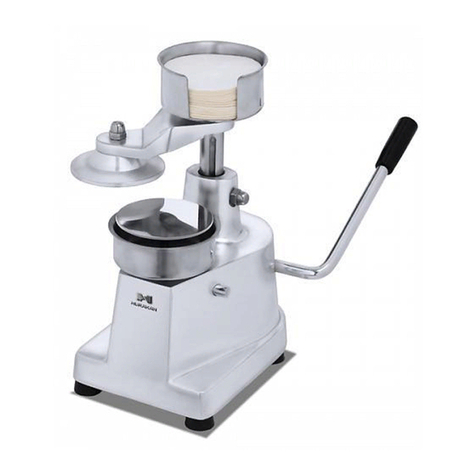8
• Ensure the ‘outdoor’ extension cord is not placed
accross walkways so that it is not a trip hazard.
• Do not use in damp or wet conditions.
• Always ensure that the power cord is fully extended
and NOT in contact with any part of the spit.
• Never use the motor if any part of it is damaged.
• Do not attempt to modify the motor, power cord
or power plug in any way.
• This product is fitted with a sealed electrical
connection plug that is compatible to the mains
supply for New Zealand and meets the
requirements of international standards. It must
be connected to a supply voltage that is equal to
that stated on the rating label. If the mains
connection plug or power cord becomes
damaged it must be replaced with a complete
assembly that is identical to the original, and this
must be replaced by an authorised service
centre. Always follow the New Zealand
requirements for connection to the mains supply.
If in doubt always consult a qualified electrician.
CARE & MAINTENANCE
Care & Maintenance
As with all appliances, proper care and
maintenance will keep them in top operating
condition and prolong their life. Your new gas
spit roaster is no exception. By following these
cleaning procedures on a timely basis, your spit
roaster will be kept clean and working properly
with minimum effort.
Cleaning
“Burning off” the spit roaster after every use
(for approx 15 minutes) will keep excessive food
residue to a minimum.
Outside Surface
Use mild detergent or baking soda and hot water
solution. Non-abrasive scouring powder can be
used on stubborn stains, then rinse with water.
If the inside surface of the spit roaster hood has
the appearance of pealing paint, baked on grease
build-up has turned to carbon and is flaking off.
Clean thoroughly with strong hot soapy water
solution. Rinse with water and allow to completely
dry. NEVER USE OVEN CLEANER.
Interior of spit roaster bottom
Remove residue using brush, scraper and/
or cleaning pad then wash with a soapy water
solution. Rinse with water and alow to dry.
Cleaning the burner assembly.
Turn the gas ‘OFF’ at the control knob and
disconnect the cylinder.
Clean the burner with a soft brush or blow clean
with compressed air and wipe with a cloth.
Clean any clogged ports with a pipe cleaner or stiff
wire (such as an opened paper clip).
Flash-Back
Spiders and small insects occasionally spin
webs or make nests in the burner tubes during
warehousing and transit.
These webs can lead to a gas flow obstruction
which could result in a fire in and around the
burner tubes. Cleaning with a soft brush
before use and at least every six months is
recommended.
This type of fire is known as ‘FLASH-BACK’ and
can cause serious damage to your spit roaster and
create an unsafe operating condition for the user.
Although an obstructed burner tube is not the only
cause of ‘FLASH-BACK’ it is the most common
cause and frequent inspection and cleaning of the
burner tubes is necessary.
If fire occurs in and around the burner, immediately
turn off gas at its source and turn the burner control
to ‘OFF’, wait until the spit roaster has cooled, then
clean the burner tubes and burner ports.
Cleaning the Fat Tray
To avoid fat or grease dripping from the spit
roaster remove and empty the fat tray after each
use. A small amount of water can be placed in the
fat cup before use to help with fat removal. Wait
until the fat tray is cool to touch before disposing
of contents.
The fat tray should be washed periodically
in a mild detergent and warm water solution.
Service
If the appliance cannot be adjusted to perform
correctly it should not be used until serviced or
repaired. Contact 0800 161 161 for service
information.
IMPORTANT
• Beware of spiders and wasps. Burner tube
should be inspected and cleaned periodically.
• To avoid any flare-ups, it is recommended
that the fat tray be checked and emptied
regularly. Contents of the fat tray may be
very hot during cooking. If emptied during
extended cooking extreme caution should
be taken and direct contact by hand should
be avoided at all times. Allow to cool
completely before disposing of the contents.
• This appliance must only be serviced by an
authorised person.
